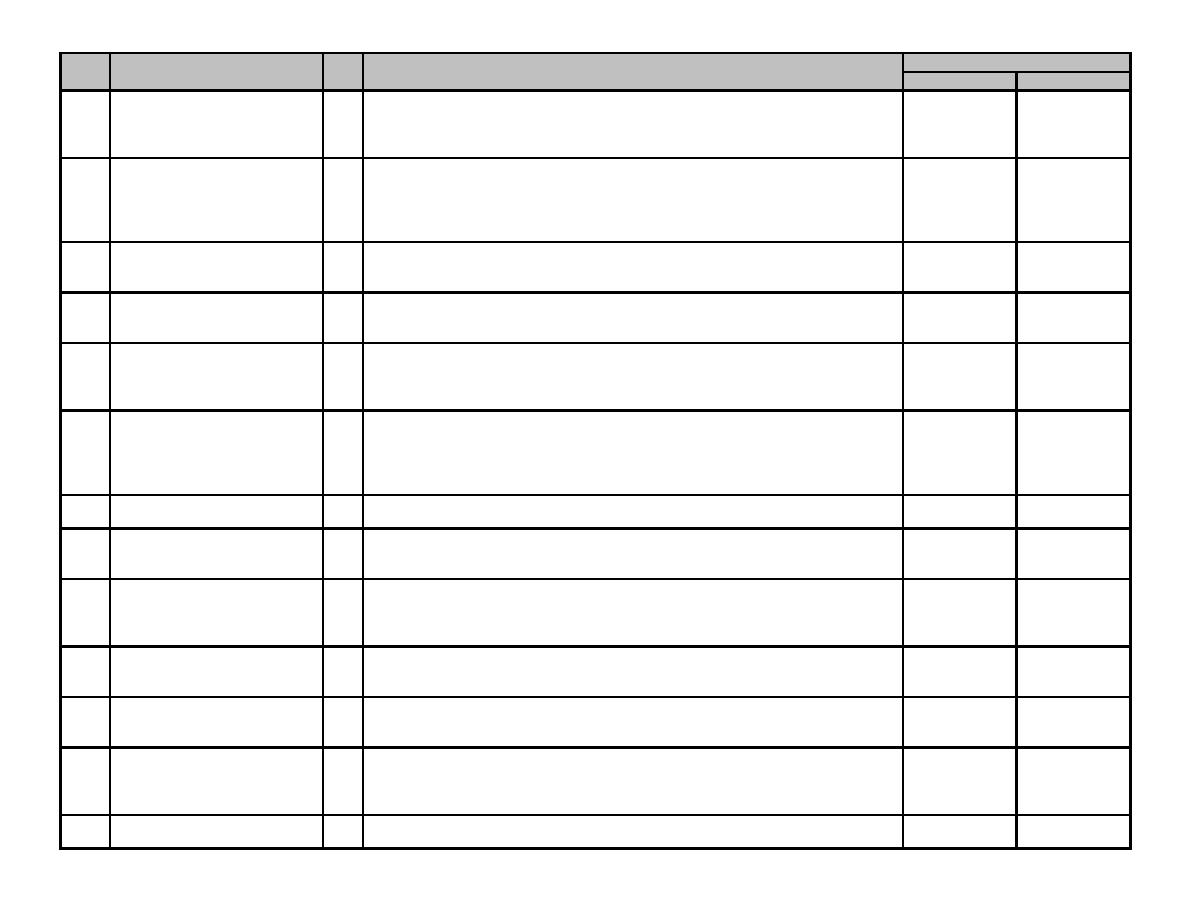
DoD FAC Cost Factor Table v5.0
CF-9
Cost Factors ($FY03)
FAC
FAC title
UM
Description
Construction
Sustainment
FP
Ranges specifically designed to satisfy training requirements for infantry and armor crews and
,119,883.06
,954.75
1771* Armor Vehicle Crew Training
teams to include gunnery from moving vehicles. These ranges are used to teach mechanized
Range
infantry and armor crews the skills needed to defeat stationary and moving targets in a tactical
array. CCF is derived from USACE data. SCF is derived from RS Means data.
1772* Armor Vehicle Unit Training Range FP
Range complexes consist of ranges to accommodate tank and fighting vehicle firing exercises and
,590,715.78
,573.82
tactical maneuver training for tanks, mechanized infantry small units. These ranges are used to
teach mechanized infantry and armor units the skills needed to defeat stationary and moving
targets in a tactical array. CCF is derived from USACE data. SCF is derived from RS Means data.
FP
A range used to teach individual and buddy-team movement and maneuver techniques while
9,688.18
,022.32
1773* Fire and Movement Range
engaging targets with the rifle. CCF is derived from USACE data. SCF is derived from RS Means
data.
FP
A range used to train personnel to employ mutually supporting fires from defensive positions
8,946.74
,029.65
1774* Squad Defense Range
against attacking troops. CCF is derived from USACE data. SCF is derived from RS Means data.
FP
A range used by an infantry unit to practice movement-to-contact operations and hasty attack
1,015.29
,949.28
1775* Infantry Battle Course
operations. The unit may fire the rifle, machine gun, automatic weapon, and light anti-tank weapon
with sub-caliber devices. CCF is derived from USACE data. SCF is derived from RS Means data.
FP
A facility for individual and low-level collective training using live fire or simulators. Live-fire
1,703.52
,443.78
1776* Urban Combat Training Range
facilities are constructed using materials which capture fragmentation or spalling objects from live
ammunition/munitions sometimes typified, but not limited to the use of rubber tires to prevent
ricocheted ammunition. CCF is derived from USACE data. SCF is derived from RS Means data.
FP
A range to familiarize with the effects of live hand grenades. CCF is derived from USACE data.
,213.78
3.68
1781* Live Hand Grenade Range
SCF is derived from RS Means data.
FP A range used to qualify engineer individuals and units on tasks such as sapper, mine warfare, light
6,008.28
,028.51
1782* Engineer Qualification Range
demolition, and engineer weapon firing. CCF is derived from USACE data. SCF is derived from
RS Means data
FP A range to teach soldiers the techniques of firing flash weapons and flame-throwers at point and
||content||
,812,165.17
,646.59
1783* Light Demolition and Flame
area targets, and employing improvised smoke and flame weapons and to train in the handling of
Training Range
explosives and pyrotechnics. CCF is derived from USACE data. SCF is derived from RS Means
data.
EA Various training facilities, other than buildings and ranges, that are not included in another Facility
,403.95
||content||
,886.48
1790 Miscellaneous Training Facility
Analysis Category. CCF is derived from Army data. SCF is based on a ratio from FAC 7522.
EA Ranges used to bore sight, align, and zero all weapons systems on individual aircraft. Cost factors
,000.24
,207.63
1791 Aircraft Weapons Calibration
are based upon TC 25-8, fig. 6-27. CCF is derived from USACE data. SCF is derived using
Range
MicroPaver.
EA Training ranges used for individual, crew, and unit helicopter gunnery exercises. It can handle the
||content||
,104,760.10
,809.50
1792 Attack Helicopter Weapons Range
machinegun, grenade launcher, cannon, rocket, and antitank missile weapons systems. Cost
factors are based upon TC 25-8, figure 6-36. CCF is derived from Army data. SCF is based on a
ratio from FAC 1771.
EA Training ranges used by all services for the command, control, and attack of aircraft on ground
||content||
.00
||content||
.001793 Aircraft Weapons Range
targets. They include both close air support and aerial bombing activities.
DoD FAC Cost Factor Table v5.0
CF-9



 Previous Page
Previous Page
